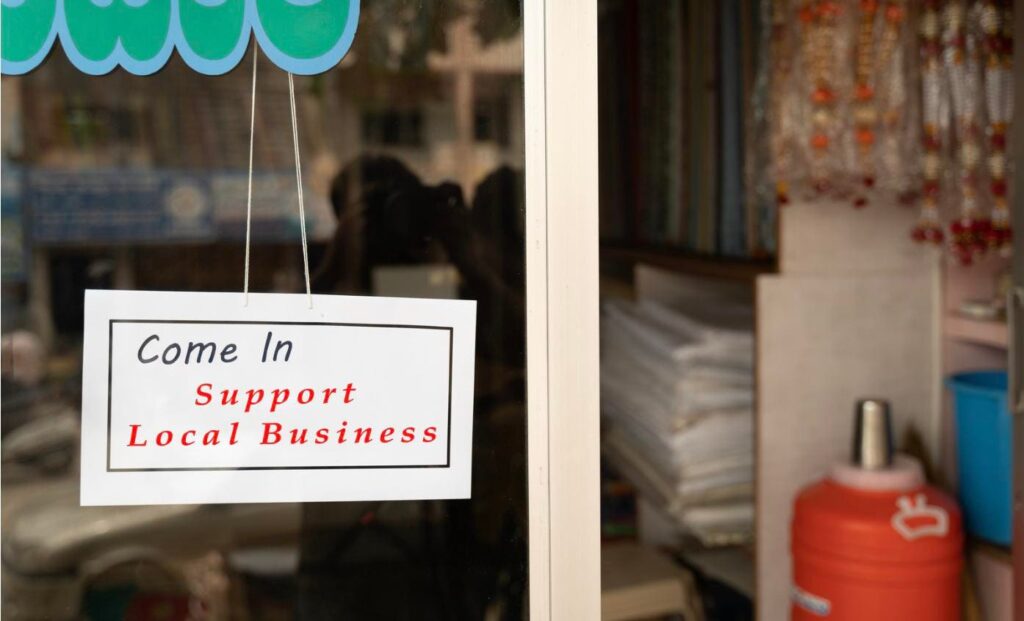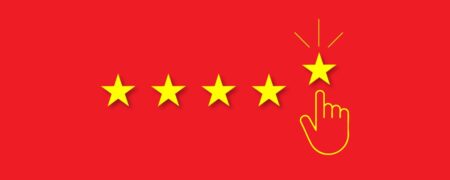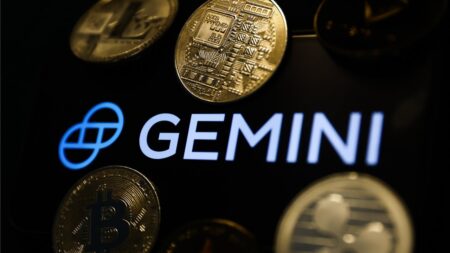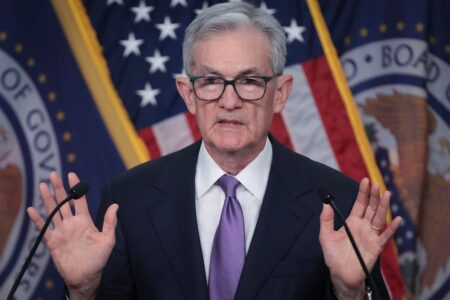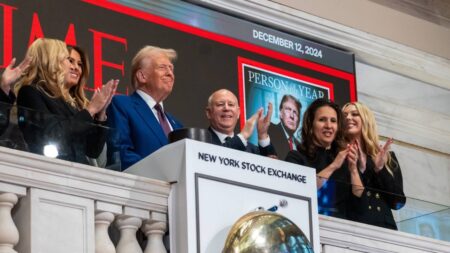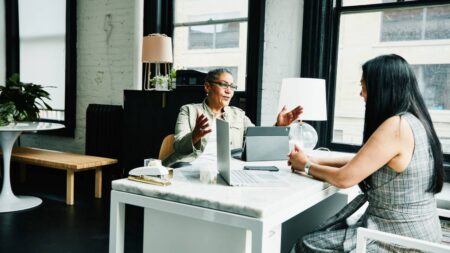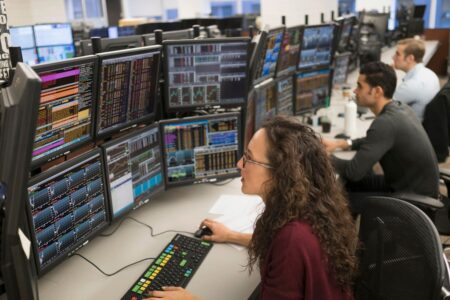The results of November’s presidential election were clear: Americans are walking into 2025 concerned about the economy. According to a recent Gallup poll, 52% of voters across the political spectrum ranked the economy as “extremely important” — mirroring national sentiment during the Great Recession.
Fundamentally, people crave a sense of security in these times: from long-term access to stable housing, dependable child care, and healthy affordable foods. But how do we actualize economic security in the face of rising income and wealth inequality?
According to my Candide Group colleague and author of The Financial Activist Playbook, Jasmine Rashid, the answer can be found in economic democracy. I sat down with Jasmine to get her take on actionable strategies people can take to reclaim agency over their economic resources, promote collective decision-making, and build more resilient, equitable economies with local solutions.
Morgan Simon [MS]: Outside of political election cycles, we often hear that we can “vote with our dollars” every day, and not just every four years. What does that mean and how effective is it as a tool for social change?
Jasmine Rashid [JR]: Rather than just participating in formal political election cycles, Americans of all backgrounds can regularly express their values and shape markets through the products and services they buy.
For one person, that might look like boycotting the fast fashion industry for the havoc it wreaks on people and the planet. Or it might look like amplifying brands that make good on their commitments to waste reduction and ethical supply chains. Personal decisions matter because they remind us of our unique agency as consumers.
However, there are obvious limits to individual actions that try to address collective problems.
For example, we know not everyone has the financial resources to choose ethically produced goods or more sustainable options. And many corporations engage in greenwashing, where they falsely claim to be more ethical or sustainable than they are, which can make it hard for consumers to make informed decisions.
So, the way to make “voting with our dollars” effective is to combine thoughtful individual consumer choices with collective organizing and action. That’s where we locate the power to shift demands and influence companies to adopt better practices, as well as foster the growth of alternative businesses and systems that are more equitable, community-focused, and sustainable.
MS: Let’s dive deeper into the collective action conversation. One thing we know is that small businesses continue to struggle in our economy. People experience the fabric of their communities changing when local mom and pop shops are replaced by big box stores. Beyond just spending, how can people channel their frustration into support?
JR: Local businesses are more than just places to buy goods or services — they’re meeting points, cultural hubs, and sources of livelihood for our neighborhoods. When we lose them, we often lose pieces of our community’s identity and resilience. We also lose many–a-dollar to outside interests, like corporate shareholders, who have no stake in the culture and health of communities where real people live, work, and play.
The movement to keep wealth circulating in a community is also known as creating a solidarity economy. As championed by the New Economy Coalition, a solidarity economy is an alternative economic framework that prioritizes social needs, cooperation, and community well-being over profit for a few. It includes initiatives like cooperatives, ethical businesses, social enterprises, and fair trade. A solidarity economy also focuses on mutual aid and collaborative decision-making, rather than short-term individual profit maximization — emphasizing democratic control of resources, ethical practices, and sustainable development.
For example, one hallmark of the solidarity economy movement is for individuals and organizations to support local production for local consumption, en masse. A local focus can create quality jobs for community members, reduce environmental impact, and help build local self-reliance.
And beyond our wallets, everyday people can leverage our voices for a solidarity economy. We can advocate for policies that support small businesses, like local tax incentives or affordable commercial rent. We can push for community-oriented zoning laws that prioritize small businesses over wealth-extracting chains. And we can even make an impact by just spreading the word — telling friends and family about great local spots or reviewing them online can make a world of difference to a small business’s survival!
Lastly, for those in a position to do so, people can consider using their financial resources to help small businesses grow, whether by participating in local lending circles, supporting community investment funds, or even encouraging employee ownership models. These approaches help create more resilient, community-driven businesses.
MS: So where we spend our dollars matters, but also where we keep our dollars matters. Why are deposits in local financial institutions so important?
JR: When you deposit money into a local financial institution, like a community bank or credit union, you’re investing directly into your community’s economic health. At Candide Group, we’ve long supported community development financial institutions (CDFIs) because we know these institutions have a mandate to serve the local economy — by design. They often prioritize loans to small businesses, first-time homebuyers, and community development projects.
Contrast that with large national or global banks, where your deposits may fund ventures that don’t align with your values—or worse, could actively harm communities, such as predatory lending or fossil fuel expansion. Local banks and credit unions, on the other hand, are more likely to support local entrepreneurs, create affordable housing, and finance renewable energy projects tailored to the community’s needs.
There’s also a relational aspect to local financial institutions. They’re often better at understanding the unique needs of the community and its residents. That personal touch can mean more flexible terms, a willingness to work with borrowers during tough times, and a genuine commitment to seeing the local economy thrive.
By keeping your money local, you’re amplifying the impact of your financial choices. Every dollar deposited becomes a tool for local growth and resilience, circulating in ways that benefit your neighbors and your community as a whole. So, moving your deposits to a local institution isn’t just a banking decision—it’s a values-driven act of community investment.
MS: When assessing our role in supporting local economies, we also need to think about what our collective tax dollars are doing. What is the participatory budgeting movement?
JR: Participatory budgeting is a powerful tool for democratizing how our tax dollars are spent and ensuring they reflect the priorities and needs of the community. In essence, it’s a process where everyday people—not just elected officials or government staff—get to directly decide how a portion of public funds should be allocated.
Here’s how it works: a city, county, or institution sets aside a specific amount of money, and community members come together to propose and vote on projects they believe will best serve their area. This could be anything from funding a new community garden to improving school facilities, installing public art, or enhancing public transportation. The key is that the process is community-driven at every stage—from brainstorming ideas to casting the final votes.
For example, in Central Falls, RI, students used PB to democratically decide how $100,000 in federal COVID relief dollars would be used to improve their schools. This kicked off a wave of participatory budgeting in City Council and at the Rhode Island Department of Health, which allocated $1.4 million dollars towards a community-led PB process to reduce community healthcare disparities.
On the other side of the country, Los Angeles residents across nine underserved communities led a participatory budgeting process to dedicate $8.5 million in City funds to resource their communities. They wrote the rules, steered the process, collected and refined community project ideas, and voted on the winning projects like rental assistance and free mobile street medicine services.
Participatory budgeting is transformative for a few reasons. First, it creates transparency and accountability in how tax dollars are spent, which helps build trust in local governments. Second, it empowers residents, particularly those who may feel disenfranchised or excluded from traditional decision-making processes, to have a tangible say in shaping their communities. And third, it ensures public money is invested in projects that directly address local needs, rather than being funneled into initiatives that may not reflect the lived realities of the people who live there.
By engaging in participatory budgeting, you’re not only influencing how tax dollars are spent—you’re helping build a culture of civic engagement and fostering a deeper connection to your community. It’s a reminder that our tax dollars are our collective resources, and we all deserve a voice in deciding how they’re used to create a better future for everyone.
I recommend checking out the Participatory Budgeting Project to learn more about how PB is taking shape in your community!
MS: Thanks Jasmine. It’s clear that when we align our money and values with our actions, we can help preserve and strengthen the fabric of our communities. To close — what’s one thing everyday Americans can do right now?
JR: Start where you are. The new year is a great time to take stock of how your dollars are or aren’t supporting the flourishing of your local community.
All of these strategies that localize wealth and provide economic opportunities for all — supporting solidarity economy-aligned businesses, moving money banking institutions designed to serve everyday people, and participatory budgeting — are key to building economic democracy. Take a closer look at where your money, time, and voice are going — and make intentional choices to align those resources with their values.
Ultimately, the shift begins with the mindset: recognizing that small businesses, community financial institutions, and local budgets are not just transactional—they’re transformational for the neighborhoods we care about.
Remember: economic democracy thrives on collective participation. Even small, intentional actions add up when enough people take them. It’s about using what we have—our dollars, our voices, our votes—to shape an economy that serves us all. So take stock and encourage those around you to do the same!
DISCLOSURES: This is the third article in our “Financial Activism” series: you can read “Financial Activism 101: Moving Money and Power with Jasmine Rashid” here, and “Financial Activism 102: It’s Time We Normalize Talking About Money” here.
Jasmine Rashid is the Director of Impact at Candide Group. The firm and post author Morgan Simon have no financial interest in Rashid’s book.
Read the full article here







